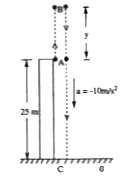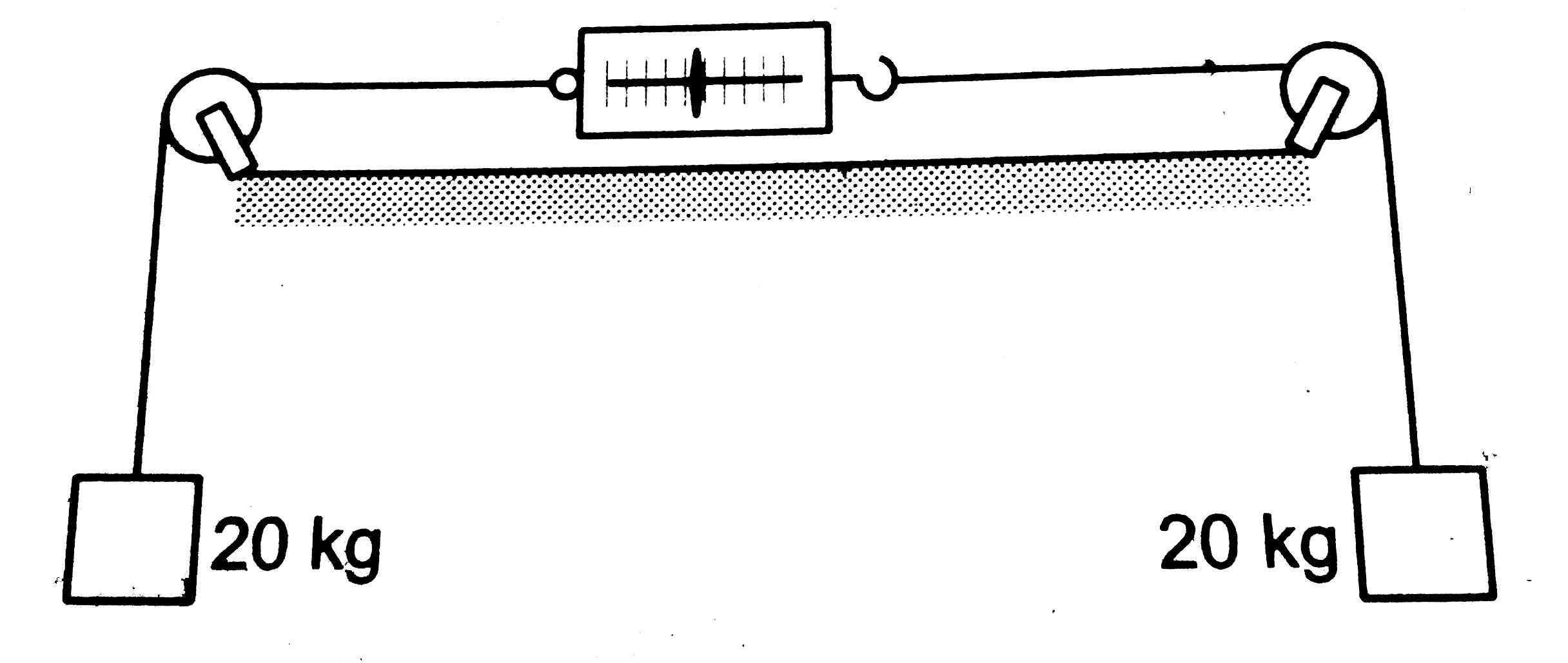Complete Solutions to Questions for short Answer of chapter NEWTON'S LAWS OF MOTION of Class 11 book with complete answers and questions
| Class 11 | PHYSICS |
| Chapter | NEWTON'S LAWS OF MOTION |
| HC VERMA | Questions for short Answer |
| Number Of Questions | 17 |
| Academic Year | 2023-24 |
The apparent weight of an object increases in an elevator while accelerating upward. A moongphaliwala sells his moongphali usinga beam balance in an elevator. Will he gain more if the elevator is accelerating up?
View SolutionA ball is thrown vertically upwards with a velocity of `20 m s^(-1)` from the top of a multistorey building. The height of the point from where the ball is thrown is 25.0 m from the ground. (a) How high will the ball rise ? and (b) how long will it be before the ball hits the ground? Take `g=10 m s^(-2)`

View SolutionA person sitting on a open car movie at constant velocity throwns a ball vertically up into air . The ball fall
View SolutionIs it possible for a particle to describe a curved path if no force acts on it? Does your answer depend on the frame of ereference chosen to view the particle?
View SolutionYou are travelling in a car during a thunderstorm. In order to protect yourself from lightning, you should prefer to
View SolutionIt is sometimes heard that inertial frame of reference is only an ideal concept and no such inertial frame actually exists. Comment.
View SolutionAn object is placed far away from all theobjects that can exert force on it. A frame of reference is constructed by taking the origin and axes fixed in this object. Will the fraame be necessarily inertial?
View SolutionFigure shows a light spring balance connected to two blocks of mass 20 kg each. The graduations in the balance measure the tension in the spring. A. What is the reading of the balance? B. Will the reading change if the balance is heavy, say 2.0 kg? c. What will happen if the spring is light but the blocks have unequal masses?

View SolutionThe acceleration of a particle is zero as measured from an inertial frame of reference. Can we conclude that no force acts on the particle?
View SolutionSuppose you are running fast in a field when you suddenly find a snake in front of you. You stip quickly. Which force is responsible for your deceleration?
View SolutionIf you jump barefooted on a hard surface, your legs get injured. But they are not injured if you jump on a soft surface like sand or pillow. Explain.
View SolutionAccording to Newton's third law each team pulls the opposite team with equal force in a tug of war. Why then one team wins aned the other loses?
View SolutionA spy jumps from an airplane with his pasrachute. The spy accelerates downward for some time when the parachute opens. The acceleration is sudenly checked and the spy slowly falls on the ground. Explain the action of parachute in checking the acceleration.
View SolutionConsider a book lying on a table. The weight of the book and the nromal force by the table on the book are equal in magnitude and opposite in direction. Is this an example of Newton's third law?
View SolutionTwo blocks of unequal masses are tied by a spring. The blocks are pulled stretching the spring slightly and the system is released on a frictionless horizontal platform. Are the forces due to the spring on the two blocks equal and opposite. If yes, is it can example of Newton's third law?
View SolutionWhen a train starts, the head of a standing passenger seems to be pushed backward. Analyze the situation from the ground frame. Does it really go backward? Coming back to the train frame, how do you explain the backward movement of the head on the basis of Newton's laws?
View SolutionA plumb bob is hung from the ceiling of a train compartment. If the train moves with an acceleration a along a straight horizontal track, the string supporting the bob makes an angle `tan^1 (a/g)` with the normal to the ceiling. Suppose the train moves on an inclined straight track with uniform velocity, if the angle of incline is `tan^-1(a/g)`, the string again makes the same angle with the normal to the ceiling. Can a person sitting inside the compartment tell by looking at the plumb line whether the train is accelerated on a horizontal straight track or it is going on an incline? If yes, how? If no, suggest a method to do so.
View Solution
Questions for short Answer questions and complete solutions for chapter NEWTON'S LAWS OF MOTION of HC VERMA PHYSICS (ENGLISH) of Class 11